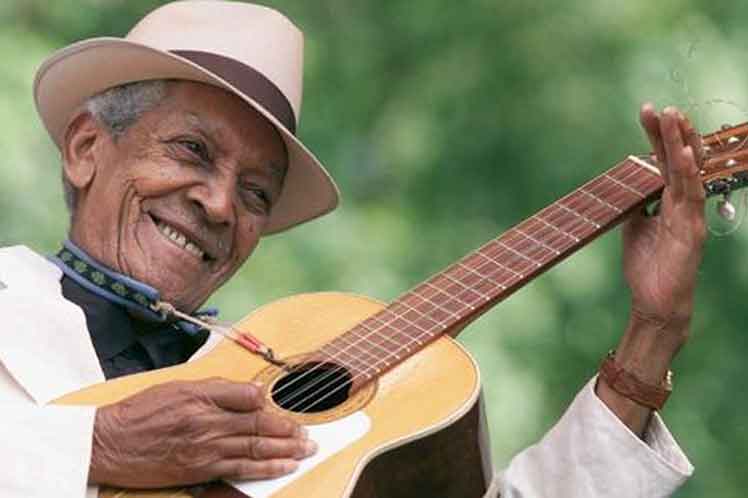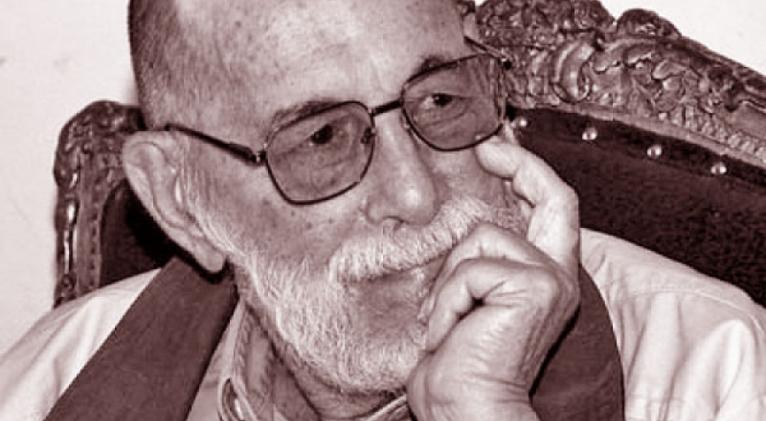Compay Segundo: A Distinctive Sound in Cuban Trova

Máximo Francisco Repilado Muñoz, known worldwide as Compay Segundo, brought a unique sound to Cuban trova. His exceptional musical voice, combined with the creation of a new stringed instrument, established him as an innovator in the genre.
Fame and fortune arrived late in life for Compay. Approaching his nineties, he became one of the most recognized elder trovadores, captivating audiences from around the globe with his music.
A guitarist, clarinetist, and composer, Compay was born in the hospitable city of Santiago de Cuba on November 18, 1907. Throughout his extensive musical career, he built a vast repertoire, composing over a hundred original pieces. Some of his most memorable songs include «Sarandonga,» «La calabaza,» «Saludos, compay,» and the iconic «Chan Chan,» which tells the story of a journey from Alto Cedro to Marcané, and then to Mayarí.
I had the rare privilege of meeting him personally, not backstage, but in his own home. It was early in the day, before he had put on his signature jipijapa hat. He held his first unlit cigar of the day in one hand, waiting to savor his morning coffee.
Soft-spoken and gracious, Compay carried the wisdom of Santiago’s traditional trovadores — the very cradle of son and bolero. He was born to the poetry of nature on one of Cuba’s most beautiful beaches, Siboney, near the heroic city.
From humble beginnings in a peasant family, he inherited a habit of smoking from his grandmother — a freed slave who lived to 115 — and perhaps a genetic gift for longevity.
In 1916, at the age of nine, Compay moved with his family to urban Santiago after his father lost his job with the railroad. There, he helped support the household by working as a barber, though music strongly pulsed through his veins, as it did in four of his seven siblings.
To further assist his family, he became a cigar roller at the renowned Montecristo cigar factory. At the same time, he studied music under Noemí Toro, a young violin and mandolin player whose father was the principal of his elementary school. Once Toro affirmed he was ready to play an instrument, Francisco chose the clarinet, which he purchased from a hobbyist, paying for it by rolling cigars in the man’s small workshop. Later, he took up the guitar and the tres cubano, eventually inventing a new instrument by combining the two: the armónico, a seven-string guitar where one string repeats the G note.
His first trip to Havana came in 1929 as a tres player with the Santiago Municipal Band for the inauguration of the National Capitol. He later returned to the capital with popular guarachero Ñico Saquito and his group, a trip that led him to settle permanently in Havana.
In the 1940s, Compay joined the famed Miguel Matamoros ensemble as a clarinetist and had the honor of performing with legends like Benny Moré. He later traveled to Mexico, where he met another young musician from his hometown, Lorenzo Hierrezuelo. In 1942, the two formed the legendary duo Los Compadres.
Hierrezuelo sang lead while Repilado took the second voice, earning him the stage name “Compay Segundo” — a moniker that would define his artistic career. In addition to working with Hierrezuelo, Matamoros, and Ñico Saquito, Compay also performed with the Sexteto Los Seis Ases and the Cuarteto Cubanacán.
In the 1980s, he formed his own group, marked by a distinct style and sound. He performed in Havana and toured internationally — visiting the United States, Spain, England, Switzerland, Italy, France, Guadeloupe, Trinidad and Tobago, and several other Caribbean nations — earning widespread acclaim.
His deep, resonant voice complemented world-renowned singers, and in 1998, he was a featured artist on the Grammy Award-winning album *Buena Vista Social Club*.
Among his many accolades are the Águila de Cristal (France), Cuba’s Sello de Laureado (the highest honor awarded by the National Union of Cultural Workers), a Grammy Award in the late 1990s, the Distinción por la Cultura Nacional, and the Orden Félix Varela. His discography includes more than 20 albums, and he also made appearances in films.
Máximo Francisco Repilado Muñoz — better known as Compay Segundo — passed away in Havana on July 14, 2003. Although he did not reach his grandmother’s remarkable age, he lived 95 full, creative, and vibrant years, leaving behind a rich and enduring legacy.
Today, his music continues to resonate with fans of traditional Cuban music — a genre, as the saying goes, “you can dance on a single brick.”
Translated by Luis E. Amador Dominguez
Photo: Radio 26



